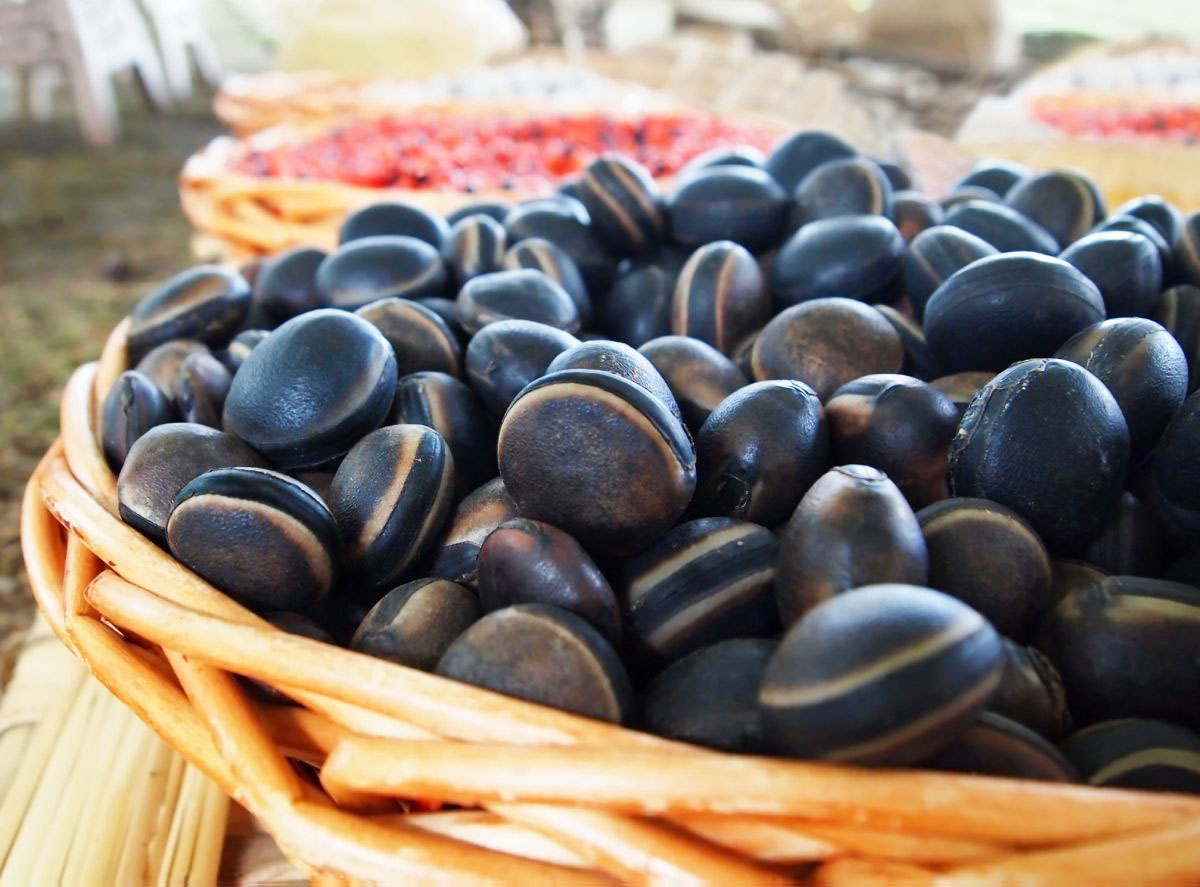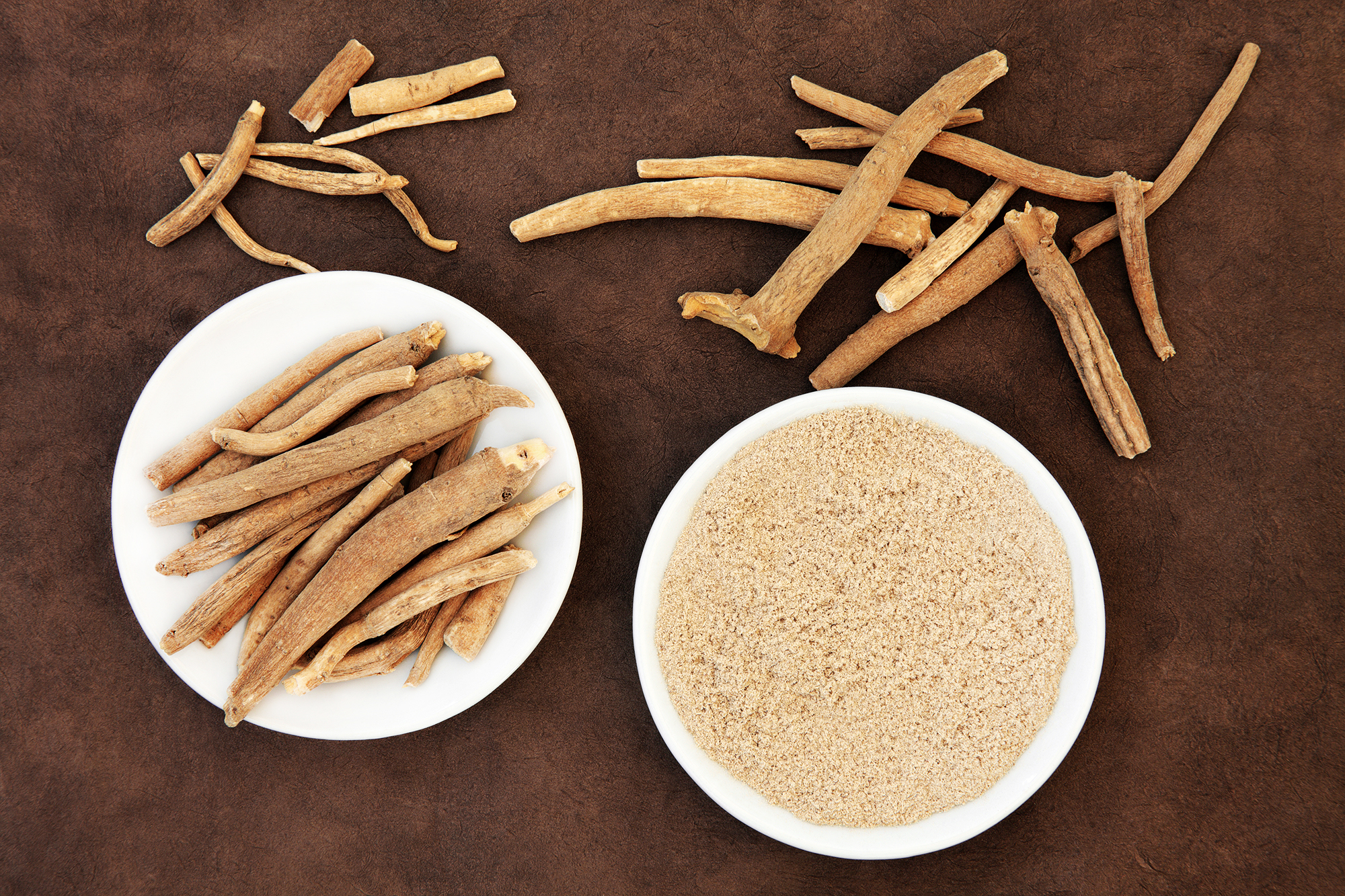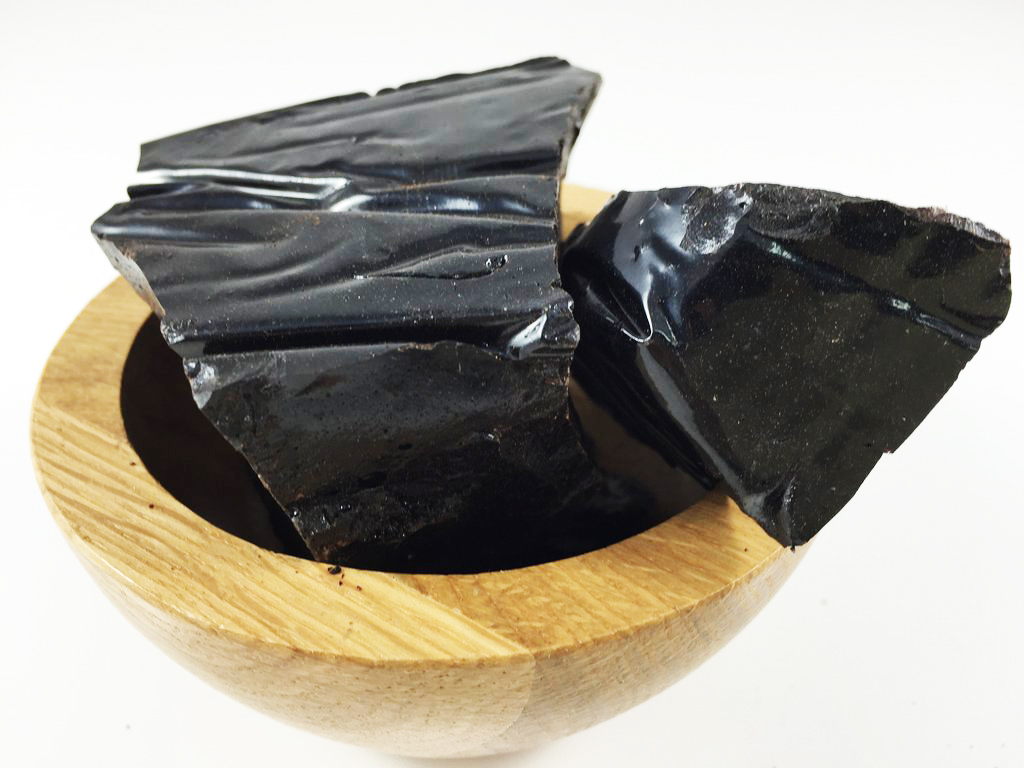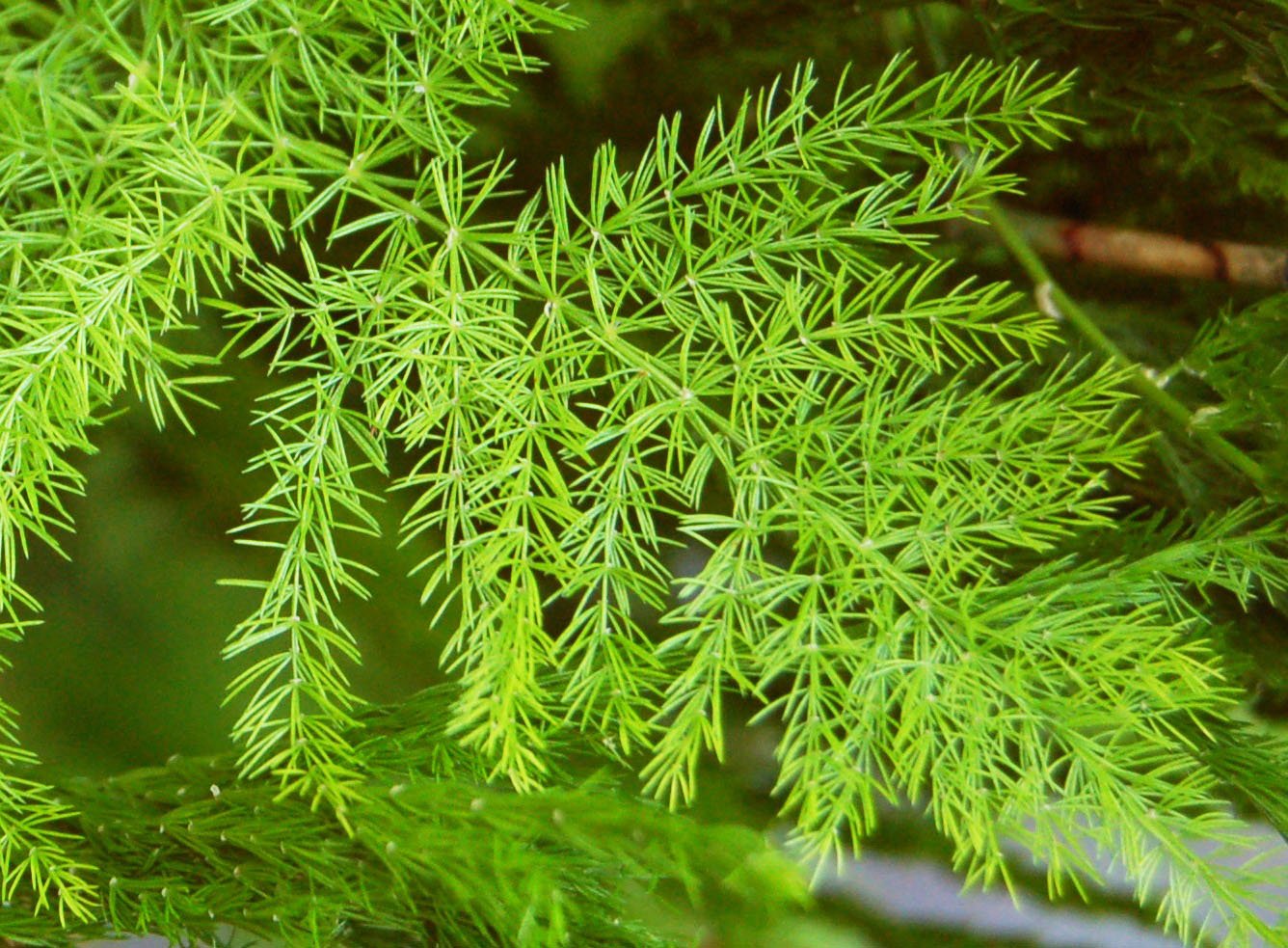Tribulus Terrestris, commonly known as puncture vine, has been a pivotal plant in traditional medicine for centuries. This perennial herb, belonging to the Zygophyllaceae family, thrives in dry climates and is widely found in various regions, including parts of Europe, Asia, Africa, and the Middle East. Historically, Tribulus Terrestris has been used in Ayurvedic medicine in India and traditional Chinese medicine for its reputed benefits in addressing various health concerns.
The use of Tribulus Terrestris can be traced back to ancient times. In Indian Ayurveda, it has been used as a tonic and aphrodisiac, while in Chinese medicine, it was typically employed for its diuretic properties and to support liver and kidney health. Its widespread historical usage across different cultures highlights its importance in traditional health practices.
In recent years, Tribulus Terrestris has gained global attention, primarily for its potential benefits in enhancing athletic performance, sexual health, and overall vitality. The plant contains active compounds like saponins, particularly protodioscin, which are believed to contribute to its health effects. These compounds have been the subject of scientific research, aiming to validate the traditional claims associated with this herb.
This comprehensive article aims to delve deep into the world of Tribulus Terrestris, exploring its historical background, traditional uses, and the scientific understanding of its potential health benefits. We will examine the current state of research on this plant, looking into its effects on human health, potential applications, and the scientific basis for its traditional uses. By blending historical insights with modern scientific findings, this article endeavors to provide a thorough understanding of Tribulus Terrestris and its place in both traditional and contemporary health practices.

Tribulus Terrestris – Gokshura
This comprehensive article aims to delve deep into the world of Tribulus Terrestris, exploring its historical background, traditional uses, and the scientific understanding of its potential health benefits. We will examine the current state of research on this plant, looking into its effects on human health, potential applications, and the scientific basis for its traditional uses. By blending historical insights with modern scientific findings, this article endeavors to provide a thorough understanding of Tribulus Terrestris and its place in both traditional and contemporary health practices.
Table of Contents
Cultivation
Tribulus Terrestris, a resilient herb known for its adaptability, flourishes in arid and challenging environments. Its cultivation typically requires minimal intervention, thriving in poor soil conditions often unsuitable for other crops. This hardy plant prefers a warm climate with ample sunlight and has a remarkable ability to withstand drought, making it ideal for cultivation in various dry regions globally. The sowing of its seeds generally occurs in the spring, and the plant displays a rapid growth cycle. The harvesting of Tribulus Terrestris, which includes its fruit, leaf, and root components, is usually timed to capture its peak medicinal potency, often linked to specific stages of its growth cycle.
Climatic Conditions
The ideal climatic conditions for cultivating Tribulus Terrestris are characterized by a warm, dry environment, typically found in subtropical and temperate regions. This herb thrives under full sunlight, necessitating an area that receives ample daylight for the majority of the day. A key aspect of its successful growth is its remarkable drought tolerance, making it well-suited for arid and semi-arid climates where rainfall is sparse or irregular.
Temperature-wise, Tribulus Terrestris favors a range that generally stays above freezing, as it is sensitive to frost. However, it can endure short periods of cold weather. Soil conditions are also a crucial factor; this plant is known for its ability to grow in poor, sandy, or gravelly soils with good drainage. Excessively fertile or waterlogged soils are not conducive to its growth. The pH of the soil should ideally be neutral to slightly alkaline for optimal growth. These climatic and soil preferences highlight the plant’s resilience and adaptability, allowing it to flourish in environments that are often challenging for other crops.
Geography
Tribulus Terrestris is a globally distributed herb, predominantly grown in various regions that offer the ideal climatic conditions it requires. Notably, it is native to and extensively cultivated in areas with warmer, drier climates. These regions include:
- Southern Europe: The Mediterranean climate of Southern Europe, with its warm, dry summers and mild winters, provides an optimal environment for Tribulus Terrestris cultivation.
- Asia: It is widely found across different parts of Asia, particularly in countries like India and China. In these regions, the plant is often grown for both its medicinal properties and as a ground cover to prevent soil erosion.
- Africa: Various countries in Africa, especially those with arid and semi-arid climates, are suitable for the growth of Tribulus Terrestris. The herb is commonly found in the drier regions of this continent.
- Middle East: The Middle Eastern desert climate, characterized by hot and dry conditions, is another ideal region for this herb. It grows well in these areas, often in soils where few other plants can survive.
- Australia: In Australia, particularly in the more arid inland areas, Tribulus Terrestris is commonly found. It has adapted well to the Australian climate and is often considered a hardy invasive species in some regions.
- North America: In the United States, Tribulus Terrestris is found in the warmer southern states. It has adapted to various environmental conditions in these areas, thriving in both cultivated and wild settings.
The widespread cultivation and naturalization of Tribulus Terrestris across these diverse geographical regions underline its adaptability to a range of climatic and soil conditions. This global distribution also reflects the historical and contemporary interest in the plant for its various uses, particularly in traditional medicine.
(Reference: Source 1, Source 2, Source 3, Source 4, Source 5, Source 6)
Chemical Composition
Tribulus Terrestris contains a variety of active compounds, each contributing to its potential health benefits. The composition and concentration of these compounds can vary based on factors like the plant’s growing conditions and the part of the plant used. Here is a detailed breakdown of its primary chemical constituents, along with their health benefits:
- Saponins (40-45%): Saponins are the most significant active compounds in Tribulus Terrestris, particularly protodioscin. They are believed to support cardiovascular health and have been associated with potential benefits in enhancing libido and sexual function. Some studies suggest they may also contribute to muscle building and athletic performance.
- Flavonoids (around 1.3%): These are antioxidants that help in combating oxidative stress. Flavonoids in Tribulus Terrestris may support cardiovascular health, improve circulation, and offer anti-inflammatory effects.
- Alkaloids (less than 1%): The alkaloids present in Tribulus Terrestris are thought to have diuretic properties and may support kidney and urinary tract health.
- Phytosterols (around 1%): These compounds are structurally similar to cholesterol and may help in managing cholesterol levels. They are also thought to support prostate health.
- Glycosides: While their exact concentration is not consistently reported, glycosides in Tribulus Terrestris are believed to contribute to cardiovascular and immune system health.
- Tannins: Present in small amounts, tannins have astringent properties and may support digestive health.
- Essential oils: The essential oil content is low but may contribute to the plant’s overall therapeutic properties, including antimicrobial activity.
- Resins, sugars, and sterols: These constituents, present in trace amounts, contribute to the overall medicinal profile of the plant.
The health benefits attributed to Tribulus Terrestris largely stem from its saponin content, particularly in enhancing sexual function and potentially aiding in muscle building. However, it’s important to note that while these constituents offer a range of potential benefits, the effectiveness and safety of Tribulus Terrestris supplements can vary. Clinical evidence supporting its use is mixed, and more research is needed to fully understand its health impacts and optimal dosing. Additionally, the quality and concentration of these compounds in supplements can vary significantly, affecting their efficacy. As with any supplement, it is advisable to consult with a healthcare provider before use.
(Reference: Source 1, Source 2, Source 3, Source 4, Source 5, Source 6)
General Health Benefits of Tribulus Terrestris
Tribulus Terrestris, a remarkable herb native to various warm regions around the globe, has garnered attention for its myriad of general health benefits. Rooted in traditional medicine, this resilient plant is renowned for its potential in enhancing sexual function and fertility, particularly noted for its aphrodisiac properties. Beyond reproductive health, Tribulus Terrestris is also studied for its positive effects on cardiovascular wellness, athletic performance, and hormonal balance. Its rich composition of bioactive compounds like saponins and flavonoids contributes to these diverse health benefits, making it a subject of increasing interest in the realm of natural health supplements and wellness research.
Cardiovascular Health Support
Tribulus Terrestris has shown promising potential in improving cardiovascular health, based on findings from various scientific studies. Its active components, particularly saponins, are believed to play a key role in this aspect. These compounds may contribute to the lowering of blood cholesterol levels, thereby reducing the risk of arterial plaque formation, a major factor in heart diseases.
Additionally, Tribulus Terrestris is thought to have a positive effect on blood pressure regulation. Its potential diuretic properties can aid in reducing blood volume, thereby easing the strain on the cardiovascular system. Furthermore, the herb’s antioxidant properties, attributed to its flavonoid content, help combat oxidative stress, which is a contributing factor in heart disease. By mitigating oxidative damage to blood vessels and improving lipid profiles, Tribulus Terrestris supports overall heart health.
(Reference: Source 1, Source 2, Source 3, Source 4, Source 5, Source 6)
Athletic Performance Enhancement
Tribulus Terrestris is often touted for its potential to enhance athletic performance, a claim that has been the subject of scientific investigation. The primary hypothesis behind its performance-enhancing effects centers around its saponin content, particularly protodioscin. These saponins are believed to stimulate the body’s production of luteinizing hormone, which in turn may lead to increased levels of testosterone in men. Elevated testosterone levels are associated with enhanced muscle mass, strength, and overall athletic performance. Additionally, Tribulus Terrestris is thought to improve endurance and reduce fatigue, possibly due to its effects on cardiovascular health and muscle recovery.
However, it’s important to note that the scientific evidence supporting these effects is mixed. While some studies have reported positive outcomes in terms of strength and endurance improvements, others have found no significant enhancement in athletic performance. Therefore, while Tribulus Terrestris may offer potential benefits for athletes, its effectiveness can vary, and more research is needed to fully understand its impact on athletic performance.
(Reference: Source 1, Source 2, Source 3, Source 4, Source 5, Source 6, Source 7)
Diuretic and Kidney Health
The diuretic properties of Tribulus Terrestris, which contribute to its potential benefits for kidney health, are an important aspect of its medicinal profile. Diuretics are substances that promote the production and elimination of urine, and Tribulus Terrestris is believed to possess natural diuretic properties. This diuretic action is primarily attributed to the presence of saponins and flavonoids in the herb. When consumed, these compounds may facilitate the kidneys’ ability to efficiently filter and expel excess water and sodium from the body. This process not only aids in reducing fluid retention but also helps in the management of blood pressure, a key factor in maintaining kidney health.
Moreover, by increasing urine output, Tribulus Terrestris aids in the removal of waste products and toxins from the body, which is beneficial for overall kidney function. This increased urinary flow can also help in preventing the formation of kidney stones by reducing the concentration of stone-forming substances in the urine. However, it’s important to approach its use with caution, especially for individuals with existing kidney conditions, and consultation with a healthcare provider is advisable.
(Reference: Source 1, Source 2, Source 3, Source 4, Source 5, Source 6)
Anti-inflammatory
Tribulus Terrestris is recognized for its anti-inflammatory properties, which have been explored in various scientific studies. The anti-inflammatory action of this herb is primarily attributed to its bioactive compounds, particularly saponins and flavonoids. These natural compounds are believed to inhibit the production and activity of certain enzymes and cytokines that trigger inflammation in the body. By modulating the inflammatory pathways, Tribulus Terrestris helps in reducing swelling, redness, and pain associated with inflammatory conditions.
Moreover, the herb’s antioxidant properties play a significant role in its anti-inflammatory effects. Antioxidants combat oxidative stress, which is a known contributor to inflammation and related diseases. By neutralizing free radicals, Tribulus Terrestris aids in preventing cellular damage and reducing the inflammatory response. This makes it potentially beneficial in managing conditions like arthritis, where inflammation is a key issue. However, while these properties are promising, it’s essential to use Tribulus Terrestris under proper guidance, especially for individuals with chronic inflammatory conditions, to ensure it complements other treatments effectively.
(Reference: Source 1, Source 2, Source 3, Source 4, Source 5, Source 6)
Analgesic Effects
Tribulus Terrestris has been studied for its analgesic, or pain-relieving, effects, which are an important aspect of its medicinal value. These analgesic properties are primarily attributed to the presence of saponins and flavonoids in the herb. These compounds are believed to work by interfering with pain signaling pathways in the body. They may inhibit the synthesis or activity of pain-inducing chemicals and neurotransmitters, such as prostaglandins and substance P, which play a key role in the perception of pain.
Furthermore, the anti-inflammatory properties of Tribulus Terrestris contribute to its analgesic effects. By reducing inflammation, which is often a source of pain, the herb helps in alleviating discomfort. This can be particularly beneficial in conditions like arthritis, where pain is a major symptom. Additionally, the antioxidant components in Tribulus Terrestris may also play a role in pain relief by reducing oxidative stress, which can exacerbate pain and inflammation.
(Reference: Source 1, Source 2, Source 3)
Immune System Support
Tribulus Terrestris is believed to offer support to the immune system, a facet that has been the subject of various scientific studies. This immune-boosting potential is largely attributed to its array of bioactive compounds, including saponins, flavonoids, and alkaloids. These components are thought to enhance the body’s immune response through several mechanisms. Saponins, for instance, may stimulate the activity of certain white blood cells known as lymphocytes, which play a crucial role in the body’s defense mechanisms against pathogens.
Additionally, the anti-inflammatory and antioxidant properties of Tribulus Terrestris contribute to its immune-supportive effects. By reducing inflammation and combating oxidative stress, the herb helps in maintaining a healthy immune system environment. This is particularly important as chronic inflammation and oxidative damage can weaken immune function.
Moreover, some studies suggest that Tribulus Terrestris might have antimicrobial properties, further supporting its role in immune defense by helping to fight off infections. However, while these properties are promising, it’s important to note that the effectiveness of Tribulus Terrestris in boosting immune function can vary, and it should be used as part of a holistic approach to health and well-being, under the guidance of a healthcare professional.
(Reference: Source 1, Source 2, Source 3)
Antioxidant
The antioxidant properties of Tribulus Terrestris, highlighted in numerous scientific studies, play a significant role in its health benefits. This herb contains various bioactive compounds, such as flavonoids, saponins, and alkaloids, which confer its antioxidant capabilities. These antioxidants work by neutralizing free radicals, which are unstable molecules that can cause oxidative stress, leading to cell damage and contributing to various chronic diseases.
Free radicals are a byproduct of both normal cellular processes and external factors like pollution and UV exposure. The antioxidants in Tribulus Terrestris donate electrons to free radicals, stabilizing them and preventing them from causing harm to cells. This action helps in reducing oxidative stress, which is linked to aging, heart disease, cancer, and neurodegenerative diseases.
Moreover, the antioxidant activity of Tribulus Terrestris supports overall health by improving the body’s resilience against environmental stressors and enhancing cellular function. However, it’s important to note that while its antioxidant effects are beneficial, they should complement a balanced diet and healthy lifestyle for optimal health outcomes.
(Reference: Source 1, Source 2, Source 3, Source 4, Source 5, Source 6, Source 7)
Blood Sugar Regulation
Tribulus Terrestris has been studied for its potential to regulate blood sugar levels, an aspect increasingly relevant in the context of metabolic health. The mechanism by which it influences blood glucose levels is thought to involve several bioactive compounds, particularly saponins. These compounds are believed to enhance the body’s insulin sensitivity, which plays a critical role in the efficient utilization and regulation of glucose.
Additionally, Tribulus Terrestris may contribute to better glucose metabolism, aiding in the reduction of blood sugar levels after meals. This effect can be particularly beneficial for individuals with type 2 diabetes or those at risk of developing diabetes, as it helps in maintaining stable blood sugar levels. Furthermore, some studies suggest that Tribulus Terrestris may also help in the regeneration and protection of pancreatic beta cells, which are responsible for insulin production.
(Reference: Source 1, Source 2, Source 3, Source 4, Source 5)
Mood and Well-being
Tribulus Terrestris is thought to enhance general mood and well-being, a benefit that has garnered attention in various scientific studies. The mechanisms behind its mood-enhancing effects are multifaceted. Primarily, Tribulus Terrestris contains saponins and flavonoids, compounds that have been associated with increased neurotransmitter activity, particularly serotonin and dopamine. These neurotransmitters play a crucial role in regulating mood and emotional well-being.
Tribulus Terrestris appears to have anti-depressant and anti-stress effects suggesting that it is an adaptogen. It has been found that harmine, a β-carboline alkaloid present in Tribulus Terrestris, is one of the main active constituents that contributes to the antidepressant and anxiolytic activity. Harmine is an inhibitor of monoamine oxidase which helps to increase level of dopamine in the brain. Also, clinical studies have found that usage of Tribulus Terrestris is associated with improvements in menopausal symptoms.
Additionally, the herb’s potential in balancing hormone levels, including stress hormones like cortisol, contributes to its positive impact on mood. By modulating the body’s stress response, Tribulus Terrestris can help in reducing feelings of anxiety and stress, thereby promoting a sense of calm and well-being.
Moreover, its antioxidant and anti-inflammatory properties may also contribute to improved mood. Oxidative stress and chronic inflammation have been linked to mood disorders, and by combating these conditions, Tribulus Terrestris may support overall mental health. However, while these effects are promising, it’s important to approach the use of Tribulus Terrestris as a mood enhancer with balanced expectations and in conjunction with other well-being practices, ideally under the guidance of a healthcare professional.
(Reference: Source 1, Source 2, Source 3, Source 4, Source 5, Source 6, Source 7)
In summary, Tribulus Terrestris emerges as a potent herb with a spectrum of general health benefits, deeply rooted in traditional medicinal practices and supported by contemporary scientific research. Its efficacy in enhancing sexual function, boosting fertility, and potentially improving cardiovascular health and athletic performance underscores its therapeutic versatility. The presence of key bioactive compounds like saponins and flavonoids in Tribulus Terrestris contributes to these benefits, offering a natural approach to health and wellness. While its promising potential is clear, it’s important to remember the necessity for balanced and cautious use, highlighting the herb’s role as a valuable, yet complex, component in the herbal supplement landscape.
Reproductive Health Benefits of Tribulus Terrestris
Tribulus Terrestris, a revered herb in the annals of traditional medicine, has gained significant interest for its impressive array of reproductive health benefits. Particularly renowned for its role in enhancing sexual function and fertility, this plant has been a cornerstone in various cultural health practices. Its natural compounds, notably saponins, are believed to influence hormonal balance, improve libido, and support sexual wellness. In men, it shows promise in enhancing sperm quality and erectile function, while in women, it may assist in hormonal regulation and menstrual cycle normalization. This multifaceted herb thus stands out as a natural ally in reproductive health and vitality.
Improved Libido
Tribulus Terrestris is widely recognized for its ability to improve libido, an effect substantiated by various scientific studies. The enhancement of sexual desire attributed to this herb primarily stems from its high saponin content, particularly protodioscin. These saponins are believed to stimulate the release of nitric oxide in the endothelial cells and increase the levels of sex hormones, especially testosterone, in the body. The increase in testosterone is particularly significant in men, as it plays a crucial role in regulating libido and sexual function.
Tribulus Terrestris is thought to enhance libido through its influence on androgen receptors in the brain, a mechanism explored in several scientific studies. Androgens are intricately involved in sexual arousal and reproductive behaviors. Virtually all sorts of sex related behaviors, including copulation, aggression, and scent marking are androgen-dependent and they are facilitated in the presence of androgens. Localization and pharmacological inhibition of Androgen Receptivity have provided overwhelming evidence of its critical role in the expression of sexual behavior, sexual motivation, and reproduction-associated behaviors.
The active compounds in Tribulus Terrestris, particularly saponins like protodioscin and protogracillin, are believed to play a pivotal role in this process. These saponins may stimulate the androgen receptors, which are crucial for responding to androgens like testosterone. When these receptors are activated, there is an increase in sexual desire and arousal. Clinical studies have suggested that protodioscin works by increasing the conversion of testosterone into the potent dehydrotestosterone, which stimulates not only sex drive but also the production of red cells from bone marrow along with muscular developments contributing to improvement of blood circulation and the oxygen transport systems, leading to optimal health.
Furthermore, it also leads to a significant increase in neurons expressing NADPH-d, suggesting that Tribulus can increase Nitric Oxide Synthase (NOS) and subsequent NO production. This way it helps improve blood flow, including to the genital areas, which is essential for sexual arousal and function. This improved circulation can contribute to enhanced sexual response and satisfaction. Various other studies have also confirmed it’s aphrodisiac effects, which noted dose-dependent increases in all parameters of sexuality, erectile properties, penile function and sexual satisfaction improving with prolonged administration.
Furthermore, the herb’s adaptogenic properties may help in reducing stress and anxiety, factors that can negatively impact libido. By mitigating these psychological barriers, Tribulus Terrestris aids in improving overall sexual desire and performance. However, it’s important to note that individual responses to the herb can vary, and it should be used under the guidance of a healthcare provider, particularly for individuals with hormonal imbalances or related health conditions.
(Reference: Source 1, Source 2, Source 3, Source 4, Source 5, Source 6)
Erectile Dysfucntion Support
Tribulus Terrestris has been studied for its potential role in supporting men experiencing erectile dysfunction (ED), with several mechanisms identified through scientific research. One key aspect is its ability to increase the levels of nitric oxide in the body, a molecule crucial for erectile function. Nitric oxide relaxes the smooth muscles in the penis, enhancing blood flow, which is essential for achieving and maintaining an erection.
Additionally, the saponins, particularly protodioscin, found in Tribulus Terrestris are believed to stimulate the release of luteinizing hormone (LH). This hormone plays a role in signaling the testes to produce more testosterone, a key hormone in male sexual function. Elevated testosterone levels are associated with improved libido, sexual performance, and erectile function.
Furthermore, Tribulus Terrestris may also exert psychological effects, such as reducing stress and anxiety, which can be contributing factors to ED. While these findings are promising, the effectiveness of Tribulus Terrestris in treating ED can vary among individuals.
(Reference: Source 1, Source 2, Source 3, Source 4, Source 5)
Testosterone Booster
Tribulus Terrestris is often associated with boosting testosterone levels in the body, a claim explored in various scientific studies. The primary mechanism through which Tribulus Terrestris is believed to influence testosterone levels involves its saponin content, especially a type called protodioscin. These saponins can stimulate the pituitary gland to release more luteinizing hormone (LH). LH plays a critical role in signaling the testes in men to produce testosterone.
Increased levels of LH due to Tribulus Terrestris supplementation can therefore lead to higher testosterone production. Testosterone is essential for various aspects of male health, including muscle mass, bone density, libido, and overall energy levels. However, it’s important to note that the effectiveness of Tribulus Terrestris in significantly boosting testosterone levels has shown mixed results in clinical studies. While some studies indicate a positive effect, others suggest minimal to no impact on testosterone levels.
(Reference: Source 1, Source 2, Source 3, Source 4)
Sperm Quality and Fertility
Tribulus Terrestris has been extensively studied for its potential to enhance sperm quality and male fertility. The herb’s active compounds, particularly saponins like protodioscin, are believed to play a pivotal role. These saponins may stimulate the body’s endogenous production of testosterone, a hormone crucial for spermatogenesis, the process of sperm production. Elevated testosterone levels can lead to an increase in sperm count, improved sperm motility, and enhanced overall sperm health, which are key factors in male fertility.
Additionally, the antioxidant properties of Tribulus Terrestris contribute to its fertility-enhancing effects. Oxidative stress is a known factor that can negatively impact sperm quality. Antioxidants in Tribulus Terrestris help in neutralizing free radicals, protecting sperm cells from oxidative damage, and improving their viability. Furthermore, Tribulus Terrestris may also improve blood circulation, including to the genital areas, which is beneficial for overall reproductive health.
(Reference: Source 1, Source 2, Source 3, Source 4, Source 5)
Hormonal Balance in Women
Tribulus Terrestris is believed to play a role in improving hormonal balance in women, a benefit explored in various scientific studies. This herb’s impact on female hormonal health is largely attributed to its active compounds, especially saponins. These natural substances are thought to influence the levels of certain hormones, including estrogen and progesterone, which are critical for maintaining hormonal equilibrium.
The modulation of hormone levels by Tribulus Terrestris can be particularly beneficial for women experiencing conditions like polycystic ovary syndrome (PCOS), where hormonal imbalance is a key issue. By helping to regulate the production and release of hormones, Tribulus Terrestris may alleviate symptoms associated with hormonal imbalances, such as irregular menstrual cycles and fertility issues. Additionally, the herb’s potential in managing menopausal symptoms, such as hot flashes and mood swings, further illustrates its role in supporting female hormonal health.
(Reference: Source 1, Source 2, Source 3, Source 4)
Menstrual Cycle Regulation
Tribulus Terrestris is thought to help in regulating the menstrual cycle in women, an effect that has been the subject of scientific investigation. The herb’s influence on menstrual regulation is primarily attributed to its potential role in balancing female hormones, particularly estrogen and progesterone. These hormones are crucial in regulating the menstrual cycle, and imbalances can lead to irregularities.
The active compounds in Tribulus Terrestris, such as saponins, are believed to interact with the endocrine system, potentially normalizing hormone levels and thus stabilizing the menstrual cycle. This can be particularly beneficial for women experiencing conditions like polycystic ovary syndrome (PCOS) or other hormonal imbalances that manifest in irregular or missed periods. Moreover, the herb’s potential in improving overall reproductive health and reducing symptoms associated with hormonal fluctuations, such as premenstrual syndrome (PMS), further contributes to its role in menstrual regulation.
(Reference: Source 1, Source 2, Source 3, Source 4, Source 5)
Post-Menopausal Symptom Relief
Tribulus Terrestris has been explored for its potential to provide relief from post-menopausal symptoms, drawing attention in various scientific studies. The herb’s effectiveness in this context is primarily attributed to its phytoestrogenic properties. Phytoestrogens are plant-derived compounds that can mimic the effects of estrogen in the body. During menopause, the natural decline in estrogen levels leads to various symptoms like hot flashes, night sweats, mood swings, and sleep disturbances.
The active compounds in Tribulus Terrestris, particularly saponins, may bind to estrogen receptors and help alleviate these symptoms by compensating for the reduced estrogen levels. This estrogenic effect can moderate the severity and frequency of menopausal symptoms, improving overall quality of life for post-menopausal women. Additionally, the herb’s potential benefits in regulating hormonal balance and its general tonic effects on the body may contribute to its effectiveness in managing menopausal symptoms.
(Reference: Source 1, Source 2, Source 3, Source 4)
Conclusively, Tribulus Terrestris stands as a natural boon for reproductive health, offering a range of benefits supported by both traditional use and modern scientific research. Its notable impact on enhancing libido, improving sperm parameters in men, and supporting hormonal balance in women highlights its potential in addressing diverse reproductive issues. While the exact mechanisms of its action continue to be explored, the presence of active compounds like saponins underscores its efficacy. However, it’s crucial to approach its use with informed caution, ensuring it aligns with individual health needs and circumstances, making Tribulus Terrestris a valuable yet carefully considered supplement in reproductive wellness.
Supplementation
The supplementation of Tribulus Terrestris in human subjects must be approached with caution, considering both the potential benefits and risks. Based on findings from various scientific studies, here is an overview of safe supplementation, recommended dosage, side effects, and safety considerations:
Recommended Dosage
Dosage Variability: The recommended dosage of Tribulus Terrestris can vary widely depending on the intended use, the form of the supplement (such as extract, powder, or capsule), and the concentration of active ingredients. It’s important to follow the manufacturer’s instructions or a healthcare provider’s advice.
Typical Range: Most studies have used dosages ranging from 250 to 1500 mg per day. Higher dosages are often used for short-term therapeutic purposes, while lower dosages may be used for longer-term supplementation.
Side Effects
General Tolerance: Tribulus Terrestris is generally well-tolerated by most individuals when taken in recommended doses.
Common Side Effects: Some users may experience stomach discomfort, cramping, or diarrhea. There have also been reports of insomnia or restlessness when taken in high doses.
Rare but Serious Side Effects: In very rare cases, supplementation has been linked to more serious side effects like kidney damage or cardiovascular issues, especially with prolonged use or high dosages.
Safety Considerations
Pre-existing Conditions: Individuals with certain health conditions, such as hormone-sensitive cancers, heart conditions, or kidney problems, should use Tribulus Terrestris with caution or avoid it entirely.
Pregnancy and Breastfeeding: Due to a lack of sufficient research, it is not recommended for pregnant or breastfeeding women.
Interaction with Medications: Tribulus Terrestris may interact with certain medications, such as blood pressure drugs or diabetes medications. It’s important to consult with a healthcare provider if you are on any medication.
Hormonal Effects: As it may affect hormone levels, individuals with hormonal disorders should use it cautiously.
Monitoring and Duration of Use
Consult Healthcare Providers: It’s advisable to consult with a healthcare provider before starting Tribulus Terrestris, especially for individuals with pre-existing health conditions or those on medication.
Monitoring: Regular monitoring of health and any side effects is important, especially if using the supplement for an extended period.
Short-term vs. Long-term Use: While short-term use is generally considered safe, the safety of long-term use is less clear. It’s best used for a limited duration under professional guidance.
In summary, while Tribulus Terrestris is considered safe for most people when used appropriately, its use should be individualized and monitored. Adhering to recommended dosages, being aware of potential side effects, and considering individual health conditions and medications are key to ensuring safe supplementation. Regular consultation with healthcare professionals is crucial to tailor its use to individual needs and circumstances.
(Reference: Source 1, Source 2, Source 3, Source 4, Source 5, Source 6)
Conclusion
In conclusion, Tribulus Terrestris, a plant with a rich history in traditional medicine, presents a fascinating blend of ancient wisdom and modern scientific inquiry. Thriving in arid climates around the world, this resilient herb has been revered for its diverse health benefits, which are now increasingly explored through scientific lenses. Its chemical composition, rich in saponins, flavonoids, alkaloids, and other bioactive compounds, underlines its potential in various health domains, particularly in enhancing sexual function, supporting cardiovascular health, and improving athletic performance.
The herb’s traditional uses in enhancing libido and fertility are supported by modern research, highlighting its role in reproductive health for both men and women. However, it’s crucial to approach the use of Tribulus Terrestris with an understanding of its appropriate dosage, potential side effects, and safety considerations. While generally safe when used in recommended dosages, its interaction with certain medications and conditions necessitates caution and professional guidance.
As we continue to explore the benefits and applications of Tribulus Terrestris, it stands as a testament to the enduring value of traditional plants in modern health science. Its study not only contributes to our understanding of herbal supplements but also bridges the gap between traditional remedies and evidence-based medicine. This herb, with its multifaceted potential, remains a subject of ongoing research, promising to unveil more insights into its role in human health and wellness.
Disclaimer: The information on this page is not intended to be a substitute for professional medical advice. Do not use this information to diagnose or treatment of men’s and women’s sexual health and general health conditions without consulting the doctor. While we review and promote nutrients, herbs, Ayurvedic medicines, and alternative therapies for men’s and women’s sexual health and general health conditions, you must consult an authorized physician before taking any of the products.














































